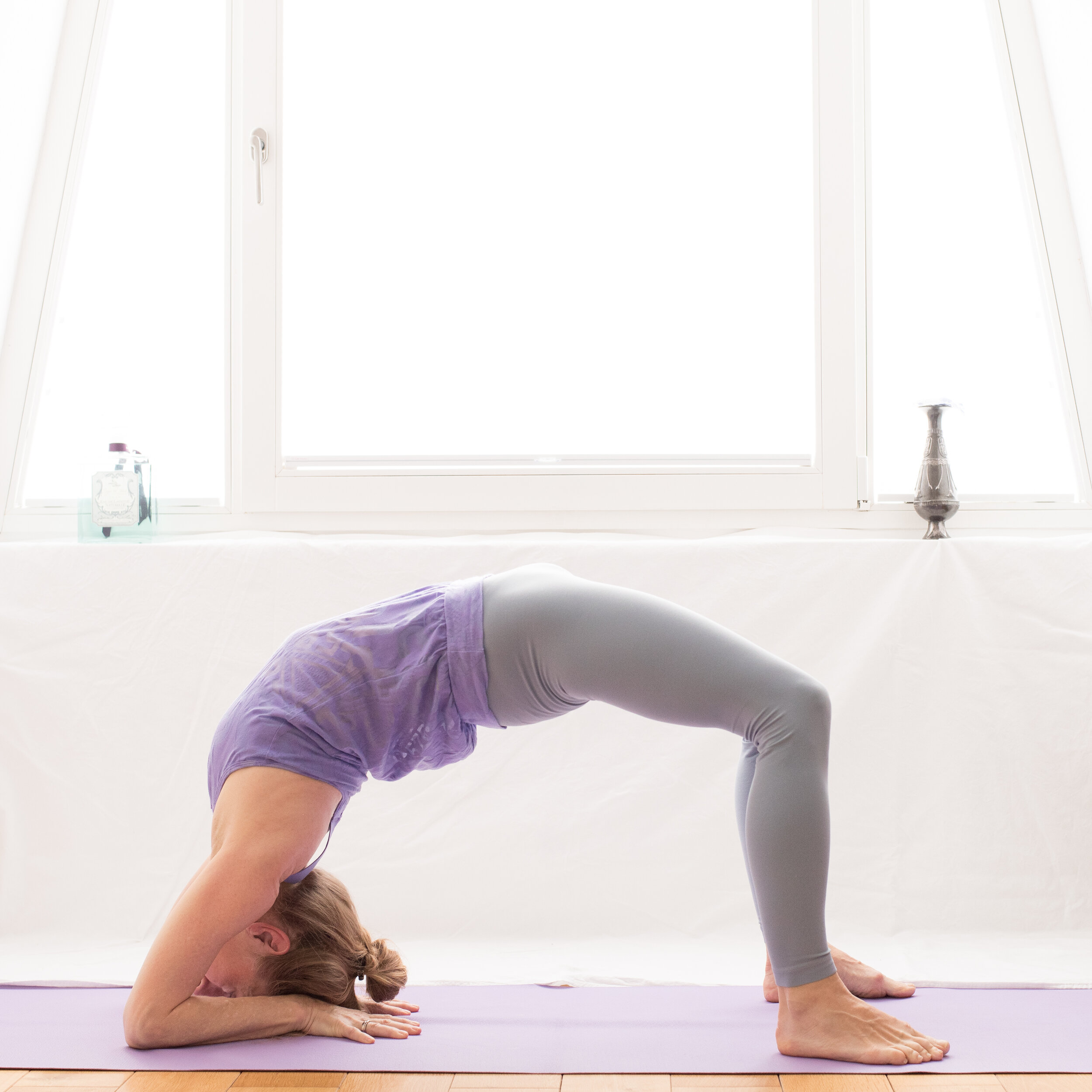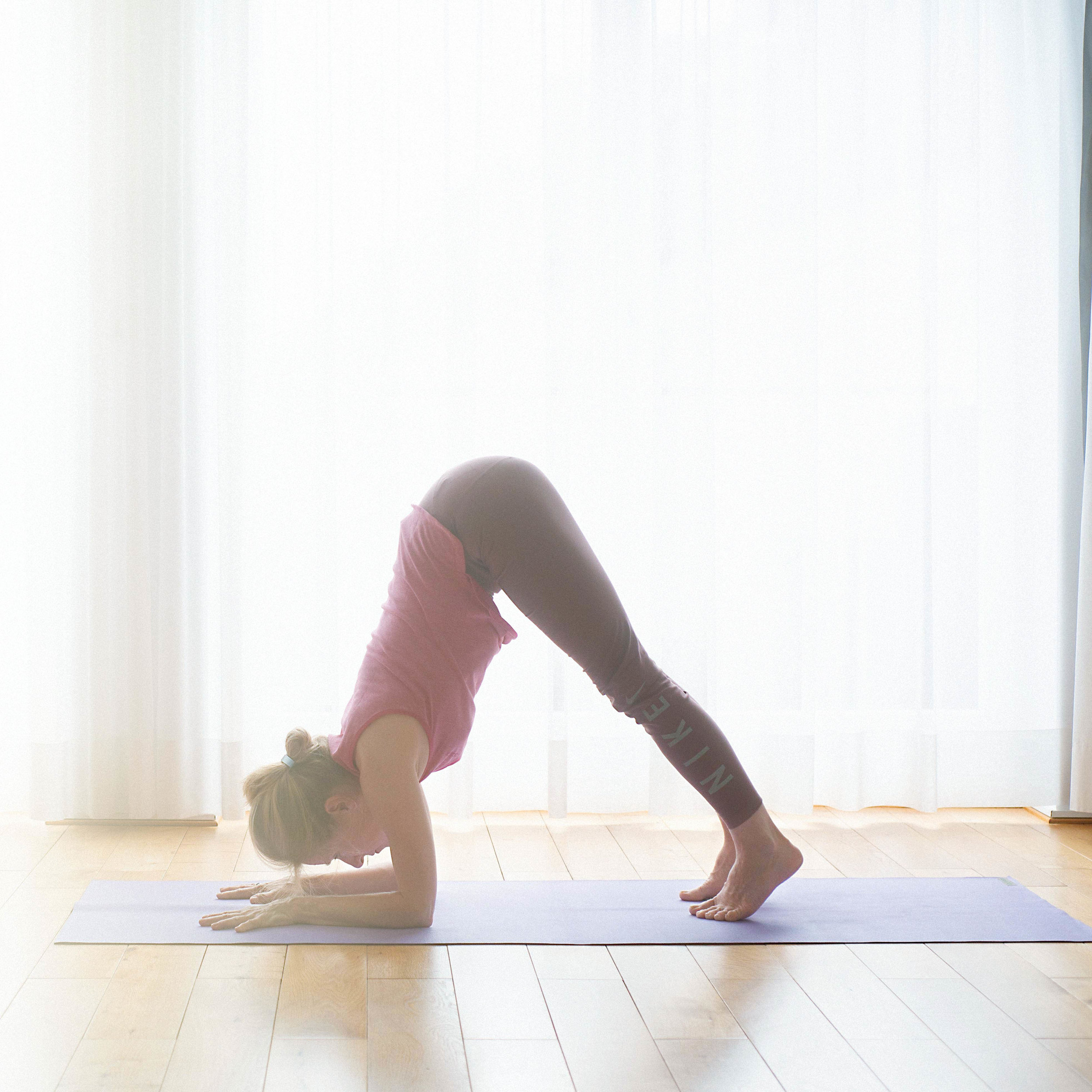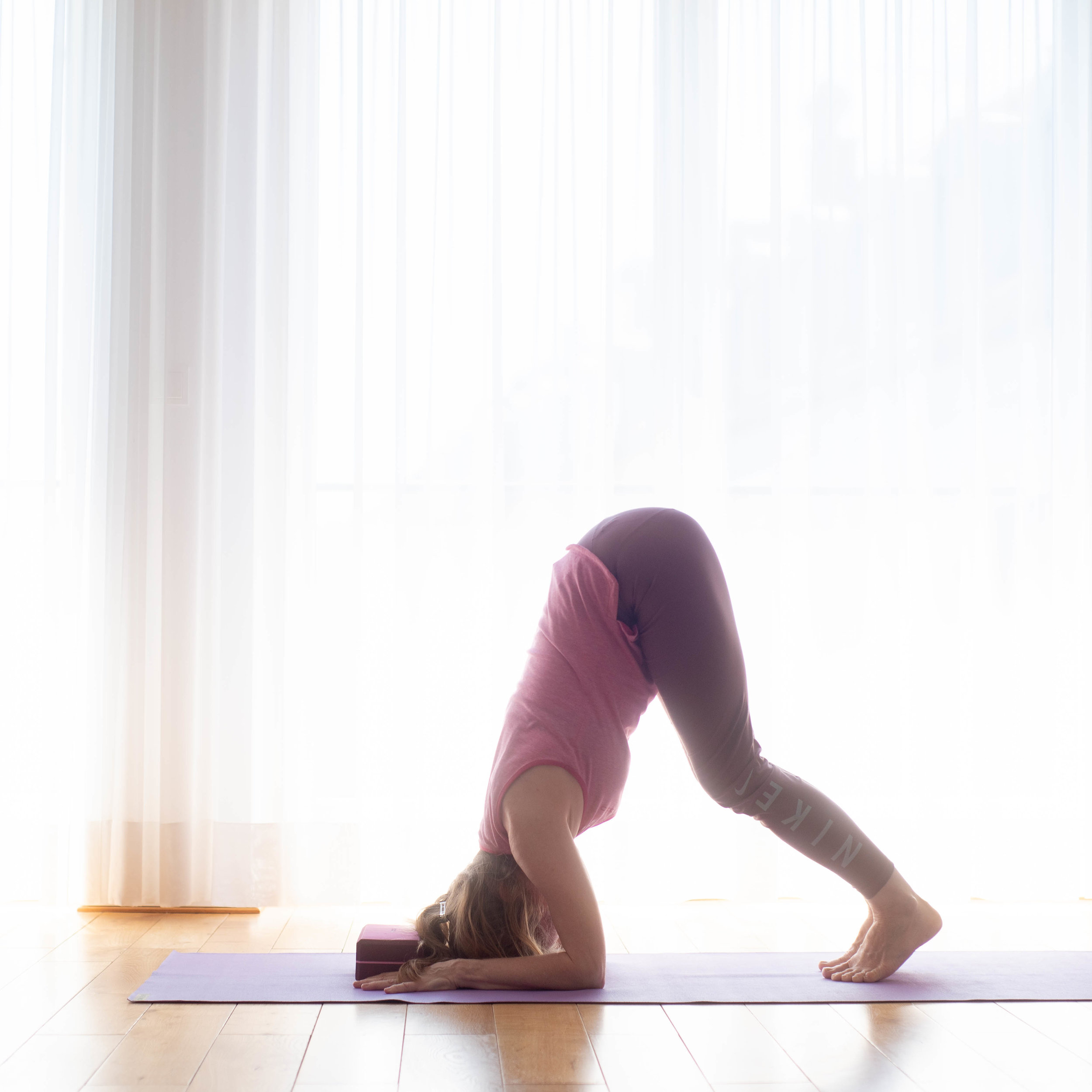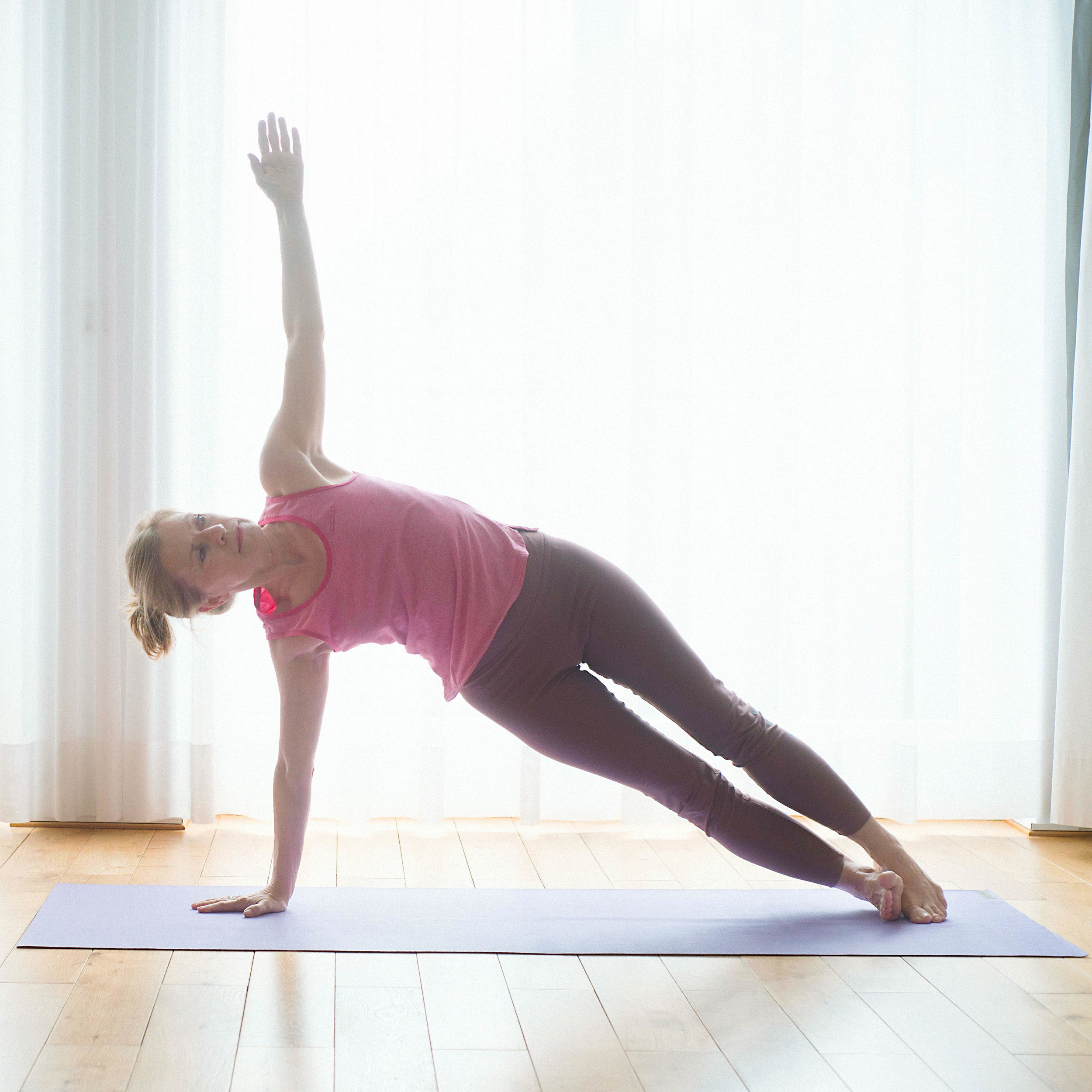Become your own yoga teacher.
In the beginning of any journey one needs a map. To go to yoga classes is a very good idea. Not everything can be learned online. Feed-back is necessary. Adjustments are very important.
Right from the beginning on one can deepen one’s own practice alone at home. Home practices are possible from the very beginning on. It’s good to establish very early in one’s yoga journey a home practice. This brings independence. It shows what is learned, which asanas one can remember. To practice alone develops discipline till finally the practice becomes a habit.
After years, many yoga classes later, many workshops later, many tutorials on YouTube later, one becomes more experienced. This is the point when the yoga student does not only repeat what is learned. Own ideas change the practice. It’s possible to consider the own strength and weaknesses.
Questions might help to deepen the understanding of one’s own yoga journey:
Are there variations of an asana?
What is an easier version of a pose and what is a more difficult version?
Perhaps blogs might support the journey?
Are there different vinyasa?
What else can support the practice? Strength training? A different diet? Pranayama?
Can it make sense to explore other yoga styles than the preferred one?
What eating habits support the practice. What diet supports the practice and the body.
The asana on the picture is a preparation asana for pincha mayurasana. I prepare myself for falling. I’d like to land safely on my feet, no matter if I fall out of the pose forward or backward. I want to avoid injuries. This is why I adjust my practice. This is possible at home.
This asana also intensifies back bending in general. It stretches the upper body.
My yoga week at home started today. When I take another day off I’m sure these days that my body needs it. Saturday and Sunday I relaxed. Today I started with primary. The mind was so unfocused that I forgot several times if I had practiced the left side already. Sometimes the body is weak, sometimes the mind is wild.
Deepening the understanding of pincha mayurasana
Today I took again a couple of pictures of pincha mayurasana exercises.
Picture: the head is lifted
Picture: the head is in line with the back
Picture: the head is in line with the back and I bend the knees to get closer to the body
No matter what I do, it’s impossible to bring the back parallel to the wall. It’s also possible to get into pincha mayurasana from the above positions, but then one has to swing and this is very difficult. I also think that one has to get controlled into a yoga pose. That’s why it’s a first goal to bring the back parallel to the wall.
My hamstrings are flexible enough. The issues are the shoulders.
To press the feet against the wall might be indeed a good exercise…..
Pincha mayurasana exercise
I walked the feet as close as possible. One must walk the feet to the elbows so far that the back is parallel to the wall. I’m still far away from this position. Next time I’ll bend my knees.
The above pose is challenging. Every asana done correctly is probably challenging in the beginning. Yesterday I watched a lot of tutorials on Youtube. Finally I came to the conclusion, that videos are inspiring. There are great teacher in that world. More important than watching others doing pinch mayurasana is to exercise. Theory is good, but it must be combined with practice.
Facebook and Instagram are down in Germany and in other areas of this world, too. I’m curious when I can post the above picture. It seems to work again after many many hours. This is a catastrophe these days. I read from desperate people: I cannot post anymore, I cannot post anymore. It’s like I don’t live when others don’t see that I live….. I checked these pages much too often. I wanted to post back bending pictures that the Internet needs to see……. lol.
We all seem to need a lot of appreciation.
We love to follow our tribes. It’s fantastic to feel connected with like-minded people, people who do back bending asanas every day like me…….. haha…….
I checked cyogalife’s picture and realized that her neck is straight. This might make a difference. Today I’ll try this pose with the neck in line with the back.
This asanas a very useful. A lot of work is still to do.
Time to practice.
Plank pose
Plank pose is more challenging than it looks, especially if one wants to hold the pose longer. One could aim for a minute and three sets. It’s also recommended to move forward and backward. I can imagine to integrate this asana in my daily practice. It builds strength in the shoulders. My upper arms could be a bit more parallel to the wall, but it’s also OK as it is. My body is straight, which is good. The poses feel differently than they look. Pictures help to adjust the asanas.
It’s easier to keep the body straight when the neck is in line with the body. I prefer looking to the floor than to the wall. These days I also keep my neck in line with the body when I do chaturanga dandasana, which is part of sun salutation. Some people have flexible necks, I don’t have a flexible neck. It’s a very sensitive part of the body. There is pressure on the neck when moving the head backwards. It’s more likely that the back arches when the head moves backwards. This is why I prefer the above version.
Plank pose is supposed to prepare pincha mayurasana. I can imagine this, because it strengthens the shoulders.
One pose leads to the next. All sorts of asanas have easier versions and more demanding versions.
So glad that I practiced and explored new poses. After 90 minutes I was exhausted. Within 90 minutes one can do a lot. If one focuses on the 80 % relevant activities, if one doesn’t avoid the challenging parts, I’m sure progress comes fast. It’s great if one can enjoy an asana. This is the final goal. An asana is mastered when it feels good.
Pincha mayurasana challenge
Cyogalife created a new challenge for July: pincha mayurasana. It’s an important asana of second Ashtanga Yoga series. It’s challenging. It can take longer than a year to learn it. But I’m also convinced, that there are always faster ways to learn it if one knows how…..
A Sivananda yoga teacher taught me how to do headstand. Within half an hour I could do headstand. So I checked how they teach pincha mayurasana.
First step is to practice headstand. One must be very familiar with headstand before one tries the next challenging asanas. The order is headstand, then pincha mayurasana, then handstand. To hold any variation of headstand for 2 minutes is a first goal. In addition it’s recommended to practice variations, i.e. folding the legs in Padmasana or moving one leg to the floor, then the other one.
When headstand is a peace of cake, pincha mayurasana is on the schedule.
The way how one moves into an asana often makes the difference. The Sivananda yoga teacher recommend to get into headstand with arms in pincha mayurasana position first. From there one lifts the head and gets into the pose pincha mayurasana. This seams easier to me. They even recommend to do a variation of vrschikasana first. That is one shall bend the knees and lift the head. The back is performing a back bending asana. In the correct form of pincha mayurasana the back is straight. With an arched back it’s easier to balance. As one can see in the picture, to have a straight back is one of my challenges. I need stronger abdomen.
I just tried exercise #1 from the #pinchaparty challenge. It’s too dangerous for me. So my first task is to hold the headstands longer and to do a headstand variations with arm positions like in pincha mayurasana.
Time to practice!







